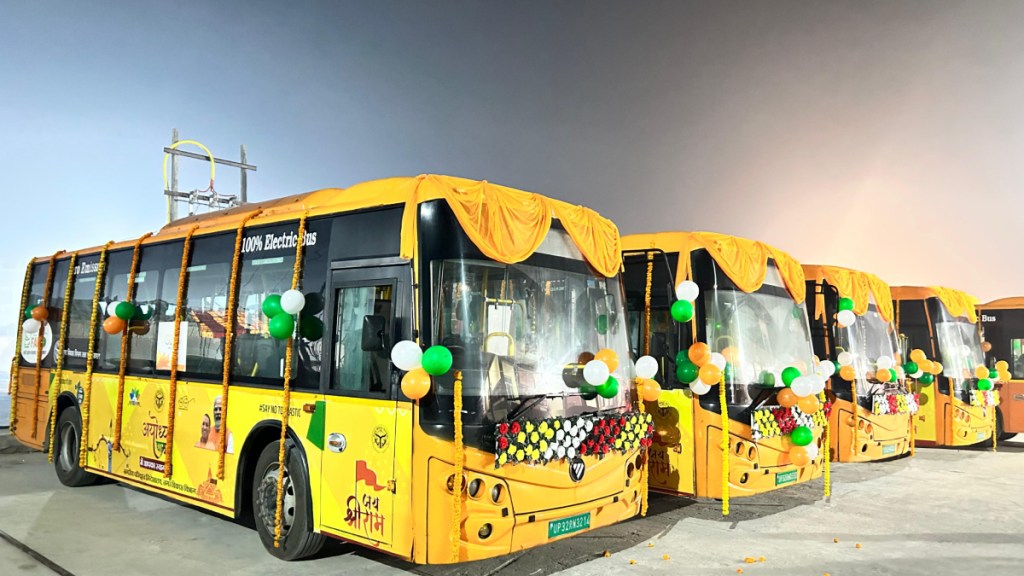By Devndra Chawla
In India’s extensive metropolitan areas, mobility has always been an obstacle. With growing populations, increased urbanisation, and the constant threat of congestion and pollution, the demand for creative, integrated solutions has never been greater. As we approach a new era in mobility, it is critical to set a course for a system that seamlessly integrates public and private transportation alternatives, supporting efficiency, sustainability, and diversity.
Public transport, typically represented by buses, trains and metros, is experiencing revolution. The once-clear distinctions between public and private forms of transportation are dissolving, resulting in a mosaic of shared mobility options. In places like Noida and Delhi, the daily commute frequently starts with a shared e-rickshaw trip to the nearest transit station, demonstrating the symbiotic interaction between various forms of transportation. Although this integration is still in its early stages, it has the potential to reduce congestion and improve accessibility in India’s teeming metropolitan centres.
However, the move to integrated urban transportation does not come without its problems. The pandemic’s aftermath has left a pall over traditional public transportation networks, with ridership declining while the demand for efficient transit options remains unabated. In this scenario, low-cost alternatives like as e-rickshaws, e-bikes, and ride-sharing applications emerge as viable complements to current public transportation infrastructure, providing commuters with flexibility and affordability. Embracing electric transportation to democratise mass mobility through Electric Mobility as a Service (e-Maas) will also reduce impact on the environment.
Addressing the gaps in mobility
However, the route to seamless integration is fraught with difficulties. The gap in fiscal allocations between road development and public transport infrastructure indicates a long-standing prejudice against the latter. While few cities are making progress towards efficient public transport networks, much more work has to be done to bridge the gap between policy purpose and execution. The development of Unified Metropolitan Transport Authorities (UMTAs), as envisioned by the National Urban Transport Policy (NUTP) 2006, is a step in the right direction, although progress has been restricted.
To realise the full promise of integrated urban transportation, both thinking and strategy must change. Instead of seeing ride-sharing services or intercity private bus operators as rivals to public transit, they can be welcomed as allies in the pursuit of sustainable mobility solutions. Physical infrastructure, such as metro stations, charging stations and bus depots, may be adapted to support ride-sharing or e-mass mobility services, boosting collaboration between public and private operators.
Also read: How can EVs contribute to sustainable urban mobility?
Furthermore, the development of low-capacity micro-mobility services such as e-bikes, automobiles, and taxis provides an opportunity to bridge the last-mile connection gap. Cities may reduce reliance on private automobiles by using existing space and incentivise riding through monthly passes.
At the heart of this transition is the requirement for strong governance structures and regulatory frameworks. Integrated agencies, which operate under the auspices of state governments, can function as single-window clearing authorities, expediting decision-making and encouraging collaboration between public and private players. By putting fare affordability, safety, and accessibility first, these organisations can ensure that the advantages of integrated urban mobility are dispersed evenly across society.
Future of urban mobility
When visualising the future of urban mobility, walkability emerges as a critical component of sustainable transportation. Cities may reduce congestion and improve air quality by investing in pedestrian-friendly infrastructure and promoting shorter bike or foot excursions. Simultaneously, economic and regulatory incentives must be used to encourage the shift to low-emission fleets, laying the groundwork for a greener, more sustainable future.
The importance of public-private partnerships (PPPs) in navigating the challenges of urbanisation cannot be understated. PPPs provide a collaborative framework for providing sustainable mobility solutions such as bike-sharing networks and electric vehicles charging stations. Cities can solve the numerous obstacles of urban mobility by combining the resources and skills of both sectors, paving the way for a better, more inclusive future.
In short, the journey to integrated urban mobility is filled with obstacles, but also rich with opportunity. India can chart a road to a more efficient, sustainable, and egalitarian transport system by embracing innovation, promoting cooperation, and prioritising passenger demands. As we approach a new age in mobility, let us grasp this opportunity to rethink how we travel, crafting a future in which transit transcends boundaries and unites communities.
(The author is the CEO & MD of GreenCell Mobility. Views expressed are the author’s own and not necessarily those of financialexpress.com.)


















